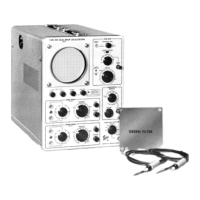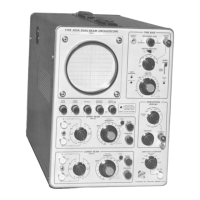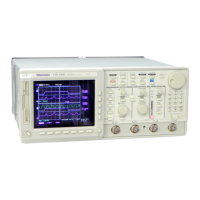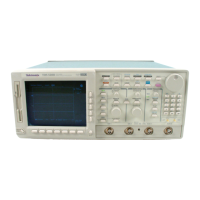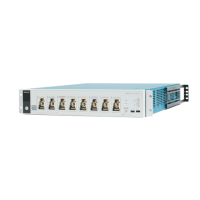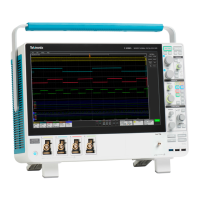Operating instructions— Type 503
effects can be tolerated, it is possible to have both plates
in the vicinity of ground and still obtain a useful display.
Typically, the sweep rate is about 8% slow when a ground
level signal is connected to the vertical deflection pins.
Care should be exercised in connecting and disconnecting
the CRT pin leads, as the pins can be easily bent or broken.
Fig. 2-9. Typical circuit for AC coupling to the CRT deflection plates.
USE OF PROBES
Use of an attenuator probe with the Type 503 will reduce
the capacitive and resistive loading on a circuit under test,
but at the same time will also reduce the oscilloscope sen
sitivity.
As an example, a 10X probe such as the Tektronix
P6006, connected to the Type 503 input, presents a char
acteristic input impedance of 10 megohms paralleled by
approximately 9.5 pF, and has an attenuation factor of 10.
Also, the voltage rating of the probe used must be con
sidered. Exceeding this rating, either in DC volts or peak
AC volts, may damage the probe.
When making amplitude measurements with an attenu
ator probe, be sure to multiply the observed amplitude on
the CRT by the attenuation factor of the probe. If the wave
form being displayed contains fast-changing signals, it will
generally be necessary to clip the probe ground lead to
the chassis of the equipment under test.
Probe Compensation
Most general-purpose probes use an adjustable capacitor
to compensate for variations in input capacitance from one
instrument to another, or between two input connectors of
one instrument. To insure the accuracy of pulse and tran
sient measurements, always check the compensation before
using a probe. To check or adjust the probe compensation,
display several cycles of the Calibrator waveform on the
CRT by connecting a test lead between the 500 mV CAL
OUT connector and the VERTICAL -(-INPUT connector.
For this display set the VERTICAL SENSITIVITY control to
.1 VOLTS/CM, the +INPUT switch to DC, the Triggering
LEVEL control to AUTO., and the -INP UT switch to GND.
Carefully observe the waveform display on the CRT, and
particularly note the general shape of the leading corner
of each positive pulse. Then disconnect the test lead between
the CAL. OUT and -(-INPUT connectors, and connect the
probe to the + INPUT connector. Set the VERTICAL SEN
SITIVITY control to lOmV/CM and touch the probe tip to
the 500 mV CAL. OUT connector. Square waves having
the same amplitude as the previous display should now
appear on the CRT. Carefully adjust the probe capacitance,
if necessary, until the leading corners of the positive pulses
have the same shape as those in the previous display.
To compensate the probe on the horizontal channel, a
sawtooth sweep voltage must be applied to the vertical
channel to obtain a vertical display of the calibrator wave
form. The displayed waveform will then appear somewhat
similar to that shown in Fig. 2-10. However, if both the
horizontal and vertical input capacitances are adjusted
correctly (47 pF), a probe compensated on the vertical chan
nel will function properly on the horizontal channel. The
procedure for checking the input capacitance is given in
Section 6 under Adjust Attenuator Compensation.
Fig. 2-10. Triggered vertical sweep.
2-10
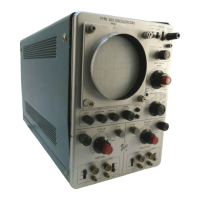
